China’s leaders confront mounting domestic social, economic, and public health-related stresses in 2023. If past is prologue, it is reasonable to expect China’s leaders will respond by seeking to calm their external environment to concentrate on challenges at home. To help counter scrutiny of their domestic governance record, they will want to present an image to their people of being afforded dignity and respect abroad. Nowhere will such symbolism matter more than in the U.S.-China context. How China’s leaders are seen to be managing relations with the United States often is a factor in how their performance is perceived at home. Even as the broadly competitive framework of the U.S.-China relationship is unlikely to change, opportunities may emerge for the United States to advance discrete affirmative priorities with China in the year ahead.
To be clear, there are no credible indicators of any softening in China’s foreign policy toward the United States, nor any accommodation of American concerns about Chinese behavior. In his 20th Party Congress work report, President Xi Jinping emphasized repeatedly that China will need to “struggle” in the face of Western opposition to China’s rise. Other Chinese officials similarly echoed at the Party Congress that the spirit of “struggle” will define the country’s foreign policy.
Don’t bet on lessening of tensions
If anything, China in the coming year likely will double-down on its pressure on Taiwan and its efforts to impose its will on Hong Kong. Beijing will continue to exert an iron fist against any hints of domestic dissent. It will maintain a tight grip over regions with large minority ethnic populations, including Xinjiang, Tibet, and Inner Mongolia. Beijing will continue to favor state intervention in its economy and likely will intensify efforts to acquire intellectual property from abroad by hook or crook. China’s diplomatic activism is unlikely to abate. The People’s Liberation Army will expand its range and frequency of operations as its capabilities grow. China will not do the United States any favors on North Korea. Xi also will continue to invest in his — and China’s — relationship with Putin and Russia.
Washington also will take actions that Beijing will view as heightening competitive dynamics in the relationship. There will be further high-level Congressional visits to Taiwan. A Republican-controlled House will dial up public criticism of Chinese activities, including by probing the origins of COVID-19. Republican presidential candidates will compete to outdo each other in their hawkishness on China. The Biden administration will invest in coalitional efforts to strengthen deterrence in the Asia-Pacific and in limiting China’s technological advances in national security-sensitive areas.
Even so, Beijing may still see virtue in calming tensions with the United States. In the 1950s, Mao used a strategy of “fight, fight, talk, talk” to buy time to regroup, study the opponent, and collect strength to reenter prolonged struggle. A similar effort may be unfolding in Beijing now.
Such an approach would allow Beijing to concentrate on restoring the veneer of governance competence. It also would lessen America’s capacity to form issue-based coalitions that challenge China’s interests. And with Xi traveling to the United States in November for the APEC leader’s meeting, a calmer environment would support his interest in being accorded preferential treatment by U.S. President Joe Biden.
Beijing will want to give as little as possible to get the benefit of stabilized relations and preferential public treatment for its leaders. From China’s perspective, a natural next step for advancing these objectives will be to negotiate with American counterparts on principles to steer the U.S.-China relationship. Xi previously has articulated that the relationship should be guided by mutual respect, mutual benefit, and shared commitment to peaceful coexistence. There is negligible benefit for American diplomats to get pulled into negotiations over such principles. Even if mutually adopted, they would not constrain Chinese behavior or solve any of the underlying stresses in the relationship.
How the United States should respond to China
Rather than reacting to Chinese efforts to negotiate principles for guiding the relationship, the Biden administration would be wise to present its concrete objectives for the year ahead. U.S. Secretary of State Antony Blinken’s trip to China in the first quarter of 2023 provides an opportunity for the United States to set the agenda. By laying out concrete goals and signposts for advancing them, Blinken could orient the relationship toward America’s top priorities and concerns. China’s focus on positive optics for Xi’s visit to the United States in November will offer an opportunity to leverage form for substance.
On the security front, both sides could take practical steps to lower risk. These include reaching agreement on limits around uses of new and emerging technologies in areas where both sides are vulnerable and no rules presently exist. For example, both sides would benefit by establishing limits on uses of artificial intelligence-enabled autonomous weapons systems. As a first step, both sides could agree that humans must be responsible for all nuclear launch decisions and that such decisions must never be delegated to artificial intelligence-enabled systems. Similarly, both sides have demonstrated destructive anti-satellite (ASAT) weapons systems. They could agree to limit future testing of ASAT weapons to prevent the creation of orbital debris.
Both countries also are vulnerable to future pandemics. They have mutual self-interest in the creation of a global disease surveillance network to detect future virus outbreaks before they spread. A similar logic applies to climate change. Methane plays a major role in rising temperatures. Both sides would benefit from pooling capabilities to advance research into methane emission reduction challenges and solutions.
The opioid epidemic in America also demands attention. Chinese officials argue that the problem is one of demand, not supply. Nevertheless, U.S. and Chinese officials must think more creatively about practical steps to reduce the flow of fentanyl with Chinese-origin precursor chemicals into the United States.
This list of priority issues is intended to be illustrative, not exhaustive. There are other critical areas where mutual self-interest should compel common purposes, such as limiting Iran’s nuclear capabilities, ensuring unimpeded energy flows and greater food security, combating ocean pollution, and coordinating on debt distress in the developing world. The point is that there is a robust menu of issues where both sides could take parallel or coordinated actions that would serve mutual self-interest.
Is the risk worth the benefit?
Skeptics will argue that there is little point in pursuing a positive agenda with China, given the inherent competitiveness of the relationship and the unlikelihood that China will respond favorably to American proposals. Such skepticism may be proven true, but it should first be tested. In 2022, such pessimism would have precluded America from successfully lobbying China to withhold materiel support to Russia’s war of aggression in Ukraine. It would have prevented Biden from drawing Xi out on China’s opposition to Putin’s nuclear saber-rattling. It also would have impeded America’s Public Company Auditing Oversight Board from successfully securing full transparency from Chinese regulators on the books of Chinese companies listing on America’s stock exchanges.
Others will warn that China will insist on issue linkage, i.e., demand that the United States reduce its pressure on China in other sensitive areas, as a precondition for coordination on common challenges. The implication of such warnings is that Washington should not get suckered into softening its stance on Taiwan or Xinjiang in pursuit of cooperation. In fact, this is not new. The way to get past Chinese requests that the United States “create favorable conditions for cooperation” is to make clear first that Washington is prepared for the relationship to improve or worsen depending upon China’s choices, and second that Washington would recognize Chinese contributions and welcome its leadership in addressing challenges. This allows China to enjoy international recognition in return for the United States securing concrete Chinese contributions on U.S. priorities.
At a strategic level, America’s leaders are receiving a strong demand signal from their international partners to manage competition with China responsibly. Thus, even if Beijing refuses to abide by America’s efforts to advance a positive agenda, the world will be put on notice as to where the obstacle lies. This, in turn, will open political space for America to enlist partners on common projects in Asia.
Situating China among global challenges
Finally, China will be one of many pressing challenges confronting the Biden administration in the new year. The White House would be in a stronger position to manage its myriad challenges — e.g., the pandemic, mass migration, global recession, global warming, Ukraine, food and energy shortages, and North Korea’s and Iran’s nuclear aspirations — if it is able to situate China within a set of global challenges it must address. This does not mean giving China a pass or yielding ground on sensitive issues such as Taiwan, technology, or human rights. America must remain steadfast in defending U.S. interests and the values it shares with its closest partners. Rather, it means recognizing that there are few major challenges in the world where China does not factor in as a partner or a problem.
Ultimately, the United States and China are locked into a long-term competition to determine which governance model can best solve global problems and improve the lives of its citizens. Performance will drive perceptions of power. America is strongest when it is improving its condition at home and galvanizing global efforts to tackle common challenges, not when it is consumed by competition with an ambitious but constrained power.
The Brookings Institution is committed to quality, independence, and impact.
We are supported by a diverse array of funders. In line with our values and policies, each Brookings publication represents the sole views of its author(s).

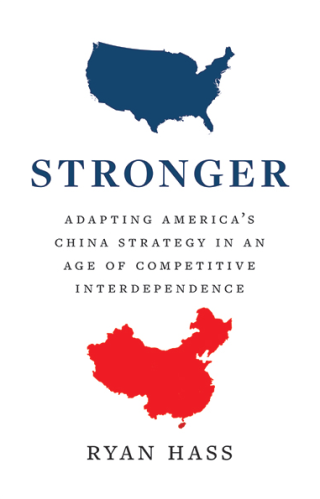
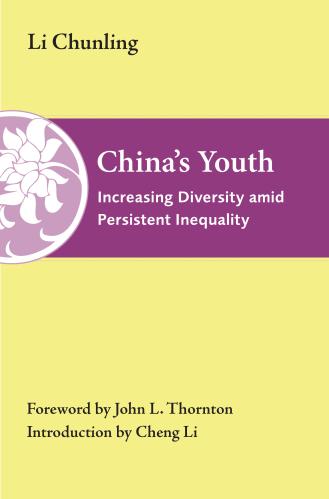
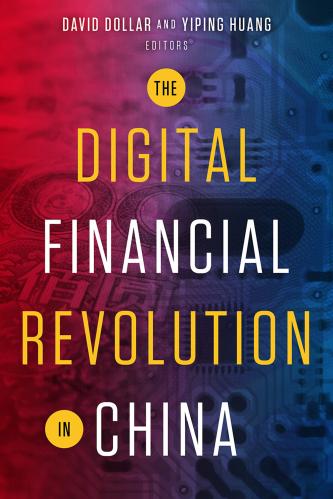
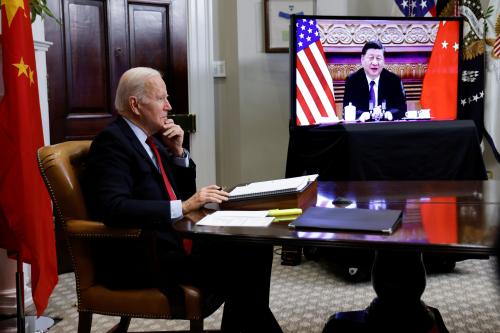

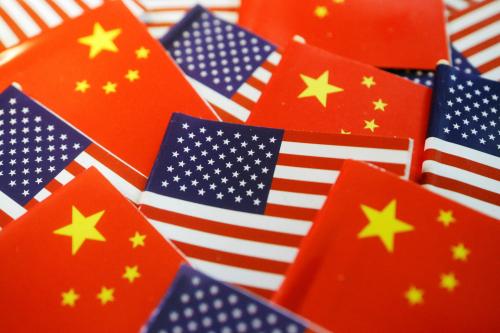




Commentary
A roadmap for US-China relations in 2023
January 4, 2023